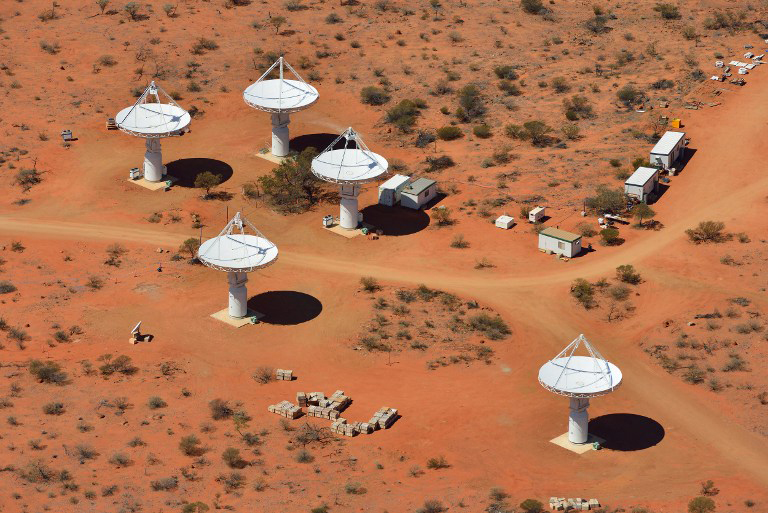Australia unveils fastest radio telescope
SKA Pathfinder could help detect distant galaxies and explore universe with unprecedented precision.

Australia has unveiled a colossal radio telescope that will allow astronomers to detect distant galaxies and explore
the depths of the universe with unprecedented precision.
The Australian SKA Pathfinder telescope, located in the remote Murchison Radio-astronomy Observatory in the Western Australian desert, is made up of 36 antennas, each 12 metres in diameter. It was unveiled on Friday.
Keep reading
list of 4 itemsHong Kong’s first monkey virus case – what do we know about the B virus?
Why will low birthrate in Europe trigger ‘Staggering social change’?
The Max Planck Society must end its unconditional support for Israel
The $140m facility can survey the sky much faster than existing telescopes, with the antennae sensitive to faint radiation from the Milky Way, giving it the ability to detect distant galaxies.
Brian Boyle, the Commonwealth Scientific and Industrial Research Organisation’s ASKAP director, said that studying the radio waves would tell astronomers unique details about the cosmos.
“They can tell about the gas from which stars were formed and about exotic objects – pulsars and quasars – that really push the boundaries of our knowledge of the physical laws in the universe,” he said.
“Radio-astronomy also gives us an insight into the very beginnings of the universe.”
Chris Evans, the country’s science minister, said the telescope was a major step forward for innovation in Australia.
“This will be 50 years worth of scientific research performed in Australia, providing world-leading scientific knowledge about our galaxies,” he said.
‘World’s most powerful’
“It will be the world’s most powerful radio astronomy telescope and has huge capabilities way beyond anything that currently exists,” Evans told ABC radio.
The telescope is part of Australia’s contribution to the broader $2.5b SKA project, jointly hosted with South Africa and New Zealand, which will have far greater capabilities.
That project will use a forest of antennae, spread across remote terrain, to pick up radio signals from cosmic phenomena that cannot be detected by optical telescopes.
It will be 50 times more powerful than current radio telescopes and will explore exploding stars, black holes, dark energy and traces of the universe’s origins since 14 billion years ago.
Boyle said the ASKAP telescope would see more than 350 researchers from more than 130 institutions undertaking 10 survey science projects.
“There’s one project to carry out a census of all the local galaxies within a few billion light years of us and that will give us the most accurate map of the mass around us… and how the Milky Way was formed,” he said.
“There’s another project to study all the magnetic fields in the universe to look at whether or not cosmic magnetism played a vital role in the formation of stars and galaxies.”
The search for extraterrestrial life was a secondary objective.
“It is almost a parallel activity to all the survey work that’s being done,” Boyle told reporters.